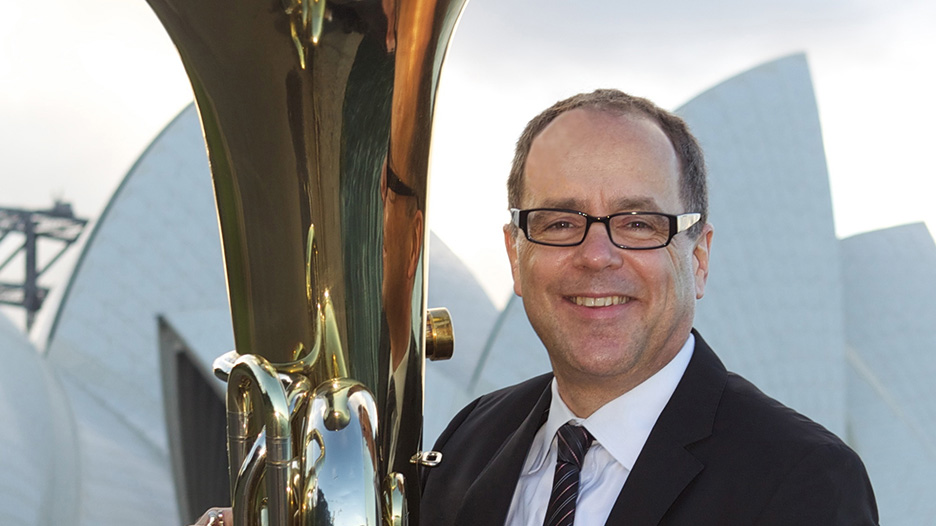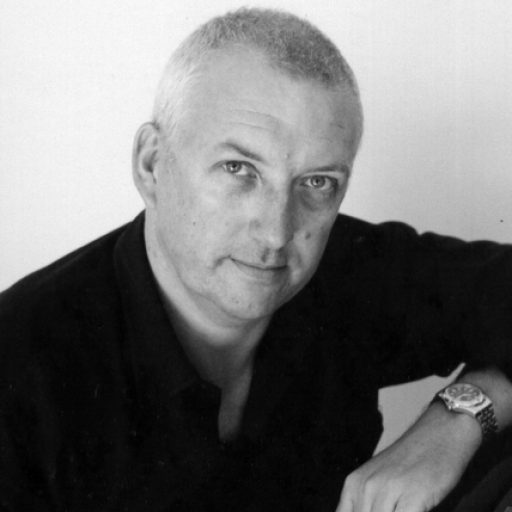The following is the complete transcript of questions and the answers given by the Dean and Principal of the Sydney Conservatorium – University of Sydney, Professor Karl Kramer in February, for the purposes of an article to be printed in the March 2015 Fine Music magazine. On April 17, Professor Kramer tendered his resignation from that post (to take effect on July 17).

Q: In your survey of the past 100 years of the Conservatorium’s existence, what do you think would be the high points?
The Con has had numerous high points in its first century, starting with the conversion of the historic government stables into a palace for music education and performance in 1915. Founding Director Henri Verbrugghen (1915-1921) set the vision for the Con to ‘provide tuition of a standard equal to that of the leading European conservatoriums’, and several pre-eminent directors followed, including Dr Edgar Bainton (1934-1948) who established the opera school, and conductor and composer Eugene Goossen (1948-1955) who fashioned it into a world-class music institution. Other important milestones include:
• the expansion of the curriculum into pre-tertiary and university degree programs, as well as other music opportunities for the wider community; the founding of Australia’s first jazz course in 1973;
• the amalgamation of the Sydney Conservatorium with the University of Sydney in 1990, enhancing the Music Faculty’s international reputation and connections;
• the redevelopment and expansion of the Con site from 1997-2001, resulting in the acoustic marvel and world-class facility that the people of Sydney enjoy today; and, of course,
• the tens of thousands of talented alumni that have been nurtured at the Con and have carried the flag for Sydney throughout the world.
Q: In the short time that you have been at the helm of this institution, about what are you most pleased?
The Con is blessed with a hardworking team of staff and a talented and focused student body. The continuing support from the University of Sydney, the State Government, professional arts partners and our Sydney audiences make for a perfect storm of total community engagement.
I am most pleased with these initiatives of the last three years:
• the creation of the Pacific Alliance of Music Schools (PAMS) in April 2014 that saw the 12 elite music institutions from the Asia-Pacific gather at the Sydney Opera House to create an agenda and draft a narrative that would establish closer ties and foster exchange;
• the establishment of Estivo in July 2014, our annual European Chamber Music Summer School based in Verona, Italy, with over 45 tertiary music students from the Sydney Conservatorium taking part to perform over 20 concerts in three Italian cities in a two-week period;
• the creation of the Westheimer String Quartet Development Program and two new annual conducting and piano scholarships, thanks to the generosity and vision of our donors;
• outreach programs such as the University of Sydney’s annual Wingara Mura summer music program that offers an intensive music workshop to indigenous high school students (years 9 and 10); and
• this year’s launch of the Con’s brand new contemporary music performance program—the Bachelor of Music Studies (Contemporary Music) — to meet the changing interests and needs of the music world.
Q: As the premier performance institution in the country, what do you see as the Conservatorium’s current strengths?
We provide a comprehensive degree offering (Bachelors through to Doctoral) across the genres of performance, composition, music education, jazz, and musicology. Our incredible mix of distinguished teachers from Australia and abroad gives us an international edge. Our students learn from practicing composers and musicians from the Sydney Symphony, Australian Chamber Orchestra, and Opera Australia, as well as other professionals. While performance-based training sits at the core of our curriculum where musicians may develop the skills and aesthetic to become successful performers, composers, or educators (or all three for that matter), students may also utilise a musical education in careers other than music. Additionally, programs of study such as the contemporary music degree help us remain current and relevant in a changing world.
Q: In your opinion, where does the Conservatorium fit in the world’s tertiary music scene?
There are no official rankings of tertiary music schools internationally. However, based on the student musicians I have seen perform over the last 25 years at the tertiary music schools in the US, Europe and Asia, students from the Con are competing on the same level and world stage. As a member of the Pacific Alliance of Music Schools (PAMS) and the International Benchmarking Exercise (IBE) group, the Con takes a leading role in calling the agenda and shaping the narrative of both these organisations. Subjectively (and totally unbiased of course), I am confident that the Con sits at the leadership table of comprehensive music schools throughout the world.
Q: How has, or how is the Conservatorium addressing the needs of a new generation in its acquisition of music skills?
Entrepreneurship is the current buzzword in arts education. But in my view, as John Cage used to say: “You can’t teach the Avant Garde; you can only increase the odds of it happening.” I celebrate the renewed vitality of the heritage we hold dear. I point to the intrepid soloists and chamber players who are colonising clubs and art galleries from state to state. I salute the superstar champions of the Western canon who reach out to unsung peers in jazz, folk, international pop, and world music, cross-pollinating traditions once rigorously kept apart. And I rejoice in the power of social networks to forge in real time a solidarity among multitudes, such as Beethoven envisioned in the final movement of his Ninth Symphony. When the YouTube Symphony Orchestra, numbering 101 musicians from 33 countries, played at the Sydney Opera House in 2011, a worldwide audience of 33 million tuned in.
We are equipping our students with technical and critical aesthetic thinking/reasoning skills, creating for them a wealth of diverse performance opportunities and exposing them to a faculty that sets the bar high and leads by example. We give our students the chance to excel and, equally important, to fail within the walls of this incredible institution. For Con students to make their mark in the decades ahead, they must assimilate the lessons of today’s trailblazers. More than that; they must acquire a habit of constant self-renewal. And we as their teachers must help them invent and nurture that skill set.
Then we kick them out of the nest and let them fly!
Q: Do you think classical music still has an impact in today’s society?
The need for music — the need to play it, to take it in, to share it with others — has been with us since the dawn of recorded time. The harps of Ur, discovered in 1929, date back some 5,000 years, which makes them as old as the invention of writing. Long unrivaled in their antiquity, they are in fact quite recent. In 2008, archaeologists discovered in a cave in southern Germany an exquisitely crafted bone flute, virtually intact. Carbon dating assigns it to the Upper Paleolithic period, some 40,000 years ago. Indeed, Australia’s own Aboriginal culture has survived continuously, on these very grounds of the Sydney Con for over 50,000 years.
Music is both universal and fundamental. Every culture in the world, it seems, has taught itself to coax sounds from a stretched hide, a hollow reed, or a vibrating string. Wherever a child is born or a couple marries or one of us leaves this world behind, we pour our joys and sorrows into music. As the expression of individual or collective spirit, music makes us human, as much as family, as much as language itself.
So does classical music matter; you betcha! You only have to attend a concert by the Sydney Symphony Orchestra and other performances at the Sydney Opera House, as well as the many halls, clubs, and theatres in Sydney to see the large audiences that are regularly attending classical and jazz music events. If you have a minute read, Lawrence Kramer’s (no relation) book, Why Classical Music Still Matters (2007); he makes an eloquent and compelling argument. And by the way, Jazz IS classical music!
Q: Being an American, how does our tertiary music education differ from that found in the USA?
Where there is a love and passion for music, there are few differences. Music is a universal language and profession. We all read the same clefs and, in the end, want to tell a story to those who listen. I have found great joy in witnessing a consistently high standard of musical talent here in Australia and the great determination that the staff and students of the Sydney Con have shown in achieving musical excellence.
What I do notice, unlike the US, is that there is a great yearning and affection by Australians to learn about the music of their own country — classical, popular, folk, ethnic. In fact, the teaching of Australian music is embedded in the secondary school curriculum. This is a beautiful thing!
Q: Looking forward, where would you like to see the Conservatorium in the next 100 years?
Currently, the Con enjoys a strong position both nationally and internationally, as we wield considerable influence because of our teaching, research, and service to the musical community. It is my hope that we build on our strengths and influences, while continuing to serve the people of Sydney and, indeed, all of Australia as a cultural hub with the finest musical education available for a lifetime of learning.
* * *
To read Professor Kramer’s letter of resignation, go to http://slippedisc.com/2015/04/exclusive-shock-resignation-of-conservatory-chief/
